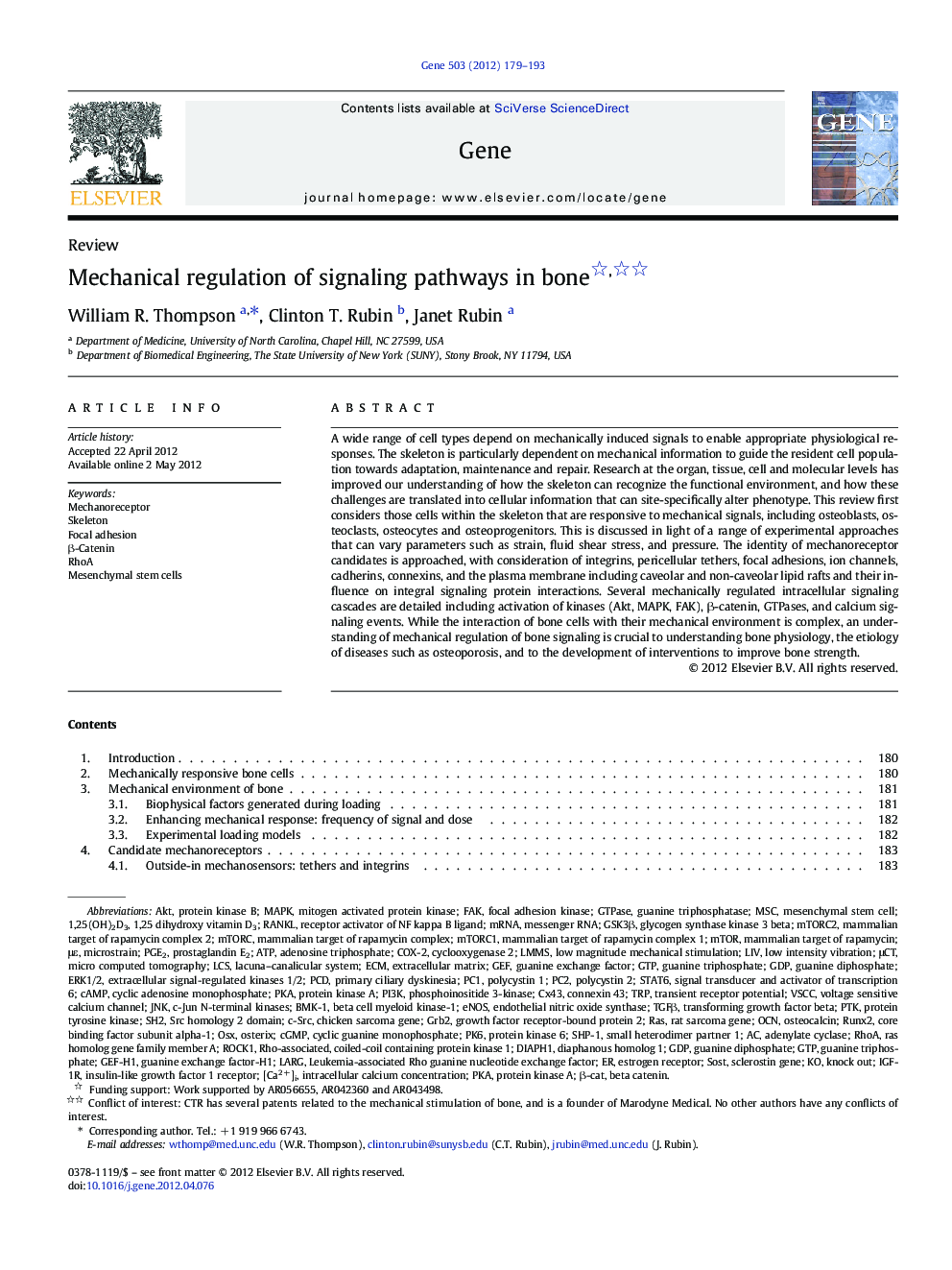| Article ID | Journal | Published Year | Pages | File Type |
|---|---|---|---|---|
| 2817877 | Gene | 2012 | 15 Pages |
A wide range of cell types depend on mechanically induced signals to enable appropriate physiological responses. The skeleton is particularly dependent on mechanical information to guide the resident cell population towards adaptation, maintenance and repair. Research at the organ, tissue, cell and molecular levels has improved our understanding of how the skeleton can recognize the functional environment, and how these challenges are translated into cellular information that can site-specifically alter phenotype. This review first considers those cells within the skeleton that are responsive to mechanical signals, including osteoblasts, osteoclasts, osteocytes and osteoprogenitors. This is discussed in light of a range of experimental approaches that can vary parameters such as strain, fluid shear stress, and pressure. The identity of mechanoreceptor candidates is approached, with consideration of integrins, pericellular tethers, focal adhesions, ion channels, cadherins, connexins, and the plasma membrane including caveolar and non-caveolar lipid rafts and their influence on integral signaling protein interactions. Several mechanically regulated intracellular signaling cascades are detailed including activation of kinases (Akt, MAPK, FAK), β-catenin, GTPases, and calcium signaling events. While the interaction of bone cells with their mechanical environment is complex, an understanding of mechanical regulation of bone signaling is crucial to understanding bone physiology, the etiology of diseases such as osteoporosis, and to the development of interventions to improve bone strength.
► A thorough review of mechanical signaling pathways related to bone biology. ► Covers signaling events regulating functions in cells influencing bone formation. ► Details the various mechanical loading parameters influencing signaling pathways.
